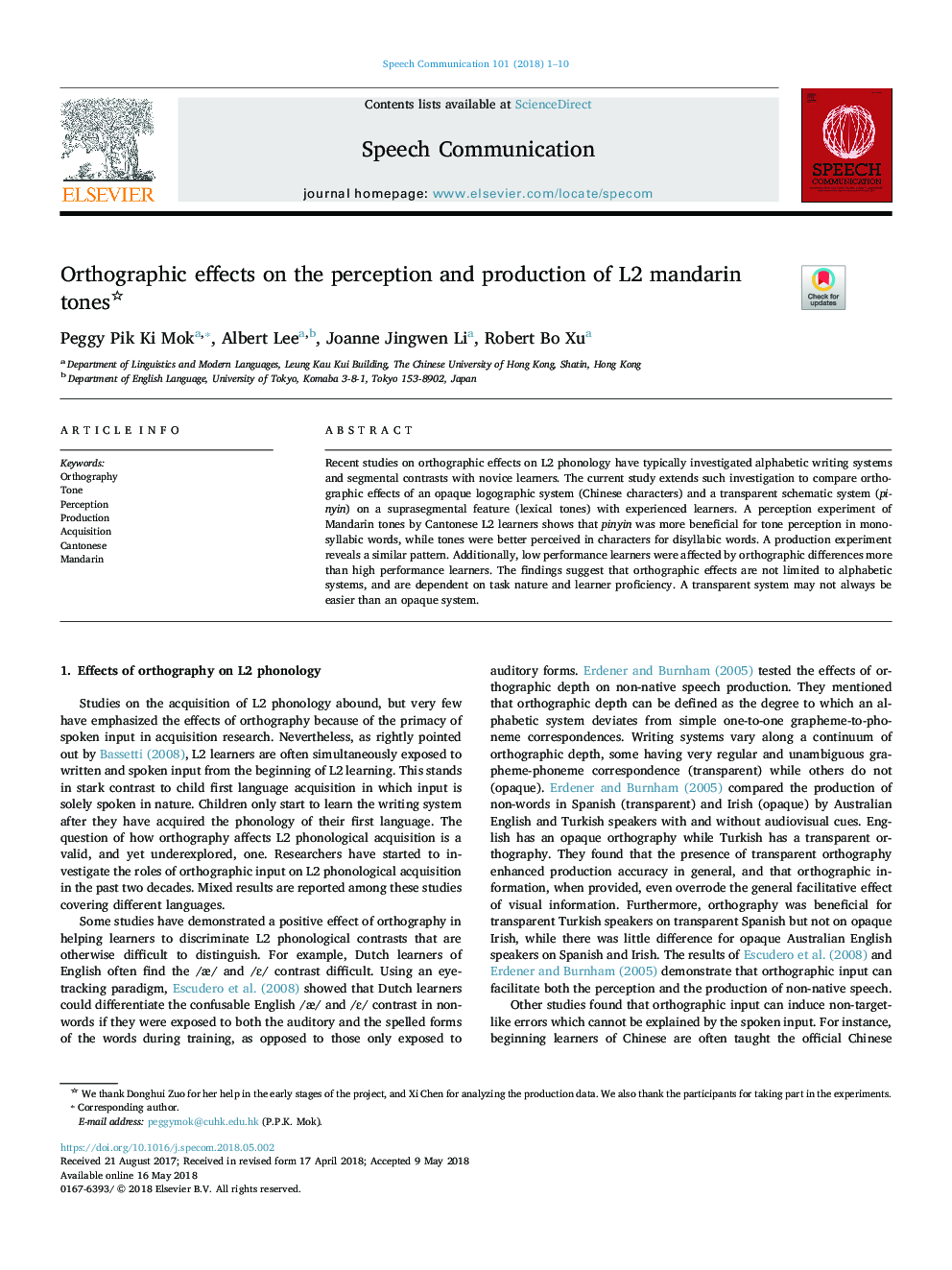| Article ID | Journal | Published Year | Pages | File Type |
|---|---|---|---|---|
| 6960491 | Speech Communication | 2018 | 10 Pages |
Abstract
Recent studies on orthographic effects on L2 phonology have typically investigated alphabetic writing systems and segmental contrasts with novice learners. The current study extends such investigation to compare orthographic effects of an opaque logographic system (Chinese characters) and a transparent schematic system (pinyin) on a suprasegmental feature (lexical tones) with experienced learners. A perception experiment of Mandarin tones by Cantonese L2 learners shows that pinyin was more beneficial for tone perception in monosyllabic words, while tones were better perceived in characters for disyllabic words. A production experiment reveals a similar pattern. Additionally, low performance learners were affected by orthographic differences more than high performance learners. The findings suggest that orthographic effects are not limited to alphabetic systems, and are dependent on task nature and learner proficiency. A transparent system may not always be easier than an opaque system.
Related Topics
Physical Sciences and Engineering
Computer Science
Signal Processing
Authors
Peggy Pik Ki Mok, Albert Lee, Joanne Jingwen Li, Robert Bo Xu,
